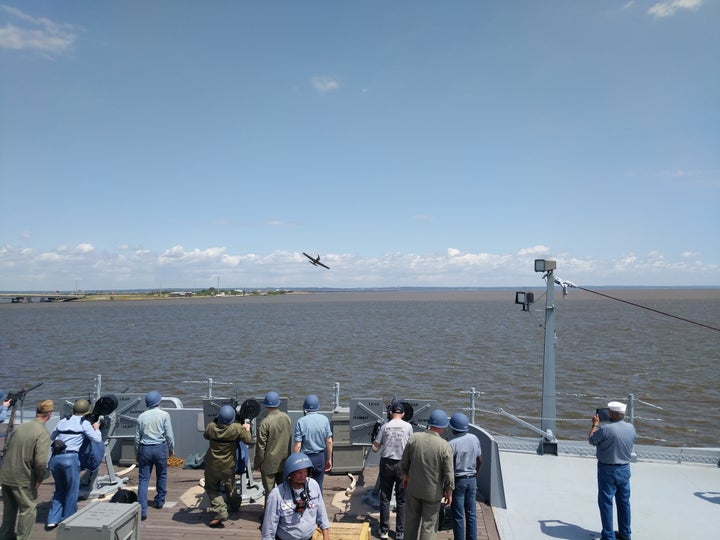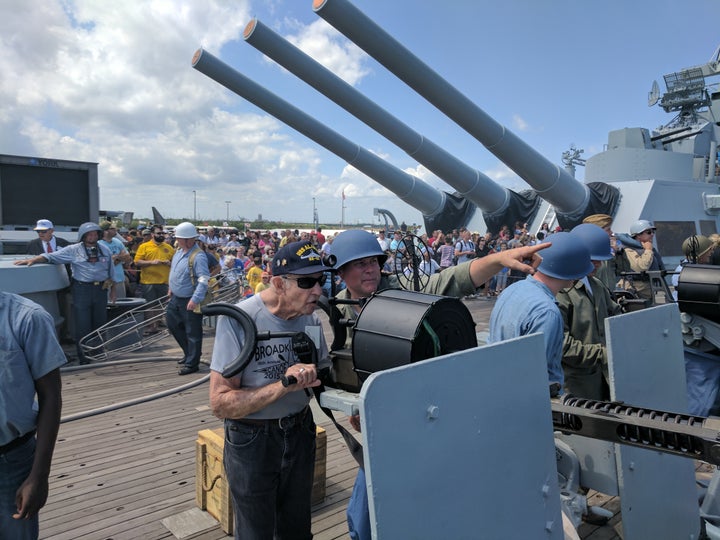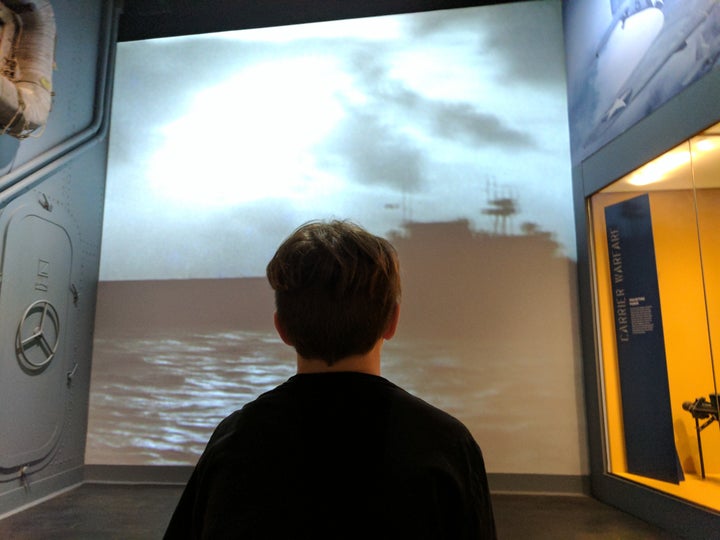
There's a moment in an historical re-enactment when you start to question reality.
For me, it came as I stood on the deck of the USS Alabama on a recent Sunday afternoon, watching two vintage Russian Yak aircraft barreling toward us low and menacing over Mobile Bay.
On the deck of the meticulously restored battleship that served during World War II, pandemonium reigned. Sailors dressed in authentic era uniforms scrambled to load their weapons with blanks, tend to the pretend wounded and extinguish simulated fires. They're part of the USS Alabama Living History Crew, who take this kind of thing pretty seriously.
How seriously? Well, for just a second, I believed the warplanes were going to take the re-enactors and their audience out in a burst of simulated cannon fire. I saw my 12-year-old son flinch. Then the warbirds pulled up and and soared south toward the ocean. The onlookers let out a collective gasp of relief.

There's no better place to learn about WWII history than a road trip to Alabama and Louisiana. It's not just Battleship Memorial Park in Mobile, Ala., that will let you experience the war in a visceral way, the way the American South demands to be experienced. A short two-hour drive away in New Orleans, you'll also find the finest museum of WWII history, The National World War II Memorial Museum. You wouldn't expect to find two such opportunities so close together outside perhaps a major world capital, yet here they are.
By itself, Battleship Memorial Park is worth the visit even without its history buffs and re-enactors. (They do their thing every other month, so you have to plan it right.) The USS Alabama, or the Mighty A as they call it here, looks as good as she did the day she was commissioned and is filled with "wow" moments -- and plenty of opportunities to lose your kids.
I misplaced mine a time or two.
While the little ones will be fascinated by the weapons, of which there are plenty, there's also enough to keep the adults occupied. Thoughtful exhibits and displays mark the walking tour of the USS Alabama. You could spend an entire day exploring the ship. The Mighty A has earned its place in history as the vessel that led the American fleet into Tokyo Bay on Sept. 5, 1945.
Most tourists come to this area to experience Alabama's famous Gulf Coast, but the battleship is a worthy day trip and a sobering reminder of the sacrifices America and its allies made during World War II -- explosions and all. For a more immersive experience, though, you have to drive west and visit the World War II museum.

Why would perhaps the world's finest World War II museum be in New Orleans, of all places? It all started as the D-Day Museum, which wouldn't have been possible without the amphibious landing vehicles built here and tested on Lake Pontchartrain by Higgins Industries. President Eisenhower credited Higgins and his boats for our winning the war in Europe. From there, the project expanded and was supported by Stephen Ambrose, a New Orleans resident and historian. Ambrose, then a professor at University of New Orleans, and Gordon "Nick" Mueller, the current museum CEO, were looking for a place to house the stories of veterans Ambrose was collecting and the memorabilia the veterans were giving to him.
So it didn't surprise us when Tom Hanks -- the executive producer of the adaptation of Ambrose's book, Band of Brothers -- showed up to narrate the spectacular Beyond All Boundaries, a "4-D" multimedia explanation of the war. This is easily one of the most compelling presentations about war I've ever seen. If you're traveling with kids, you'll want to take them here first. The fog effects, pyrotechnics and moving seats really convey the drama of the conflict and set the stage for the exhibits that follow.
My middle son, Iden, saw the medical warning that preceded the show, about the possibility of it aggravating "certain medical conditions" and asked me if we were going on a rollercoaster. But after sitting through Beyond All Boundaries he sat in stunned silence as the credits displayed. This was a rollercoaster of the mind.

It's absolutely worth checking out the signature Campaigns of Courage after you watch the presentation. The Road to Berlin follows the conflict in Germany from the Normandy invasion to Germany's surrender. A second exhibit, The Road to Tokyo, charts the same course for Japan. The exhibits are highly interactive and deeply compelling. Visitors use special "dog tags" (they're actually plastic cards) to activate displays, which tell a personal story of someone who lived through the war.

For us, one of the most sobering exhibits was on the power of propaganda, Winning Over Hearts and Minds, a short display of wartime propaganda posters. It prompted a frank discussion with my children about the subtle effectiveness of propaganda and some of its modern-day uses. You can't walk though these displays without seeing echoes of the current rhetoric used by politicians both in America and abroad.
On a southern road trip, the last thing you would expect is a reminder of the greatest human conflict. But, thanks to a restored ship, a museum built in one of the unlikeliest places, and several loud explosions, you can find one that will stay with you for a lifetime.
If you go …
Where to stayThe International House is a boutique property located a few blocks away from the WWII museum, but also close to New Orleans' famous French Quarter. The hotel, located in a former world trade center, has been carefully restored with lots of attention to detail.
What to doCheck out the Hurricane Katrina exhibit at The Presbytère, the Louisiana State Museum. It's a moving exhibit that follows this devastating hurricane and its aftermath and a testament to the city's resilience.
What to eatYou mean, what not to eat? With only two days in town, we never got past breakfast. That's Cafe Du Monde for beignets and coffee and Brennan's for one of their famous breakfasts. Try the turtle soup -- but don't forget the Sherry. I'll discuss the differences between Creole and Cajun in a future story.
Christopher Elliott specializes in solving seemingly unsolvable consumer problems. Contact him with your questions on his advocacy website. You can also follow him on Twitter, Facebook and Google or sign up for his newsletter.
